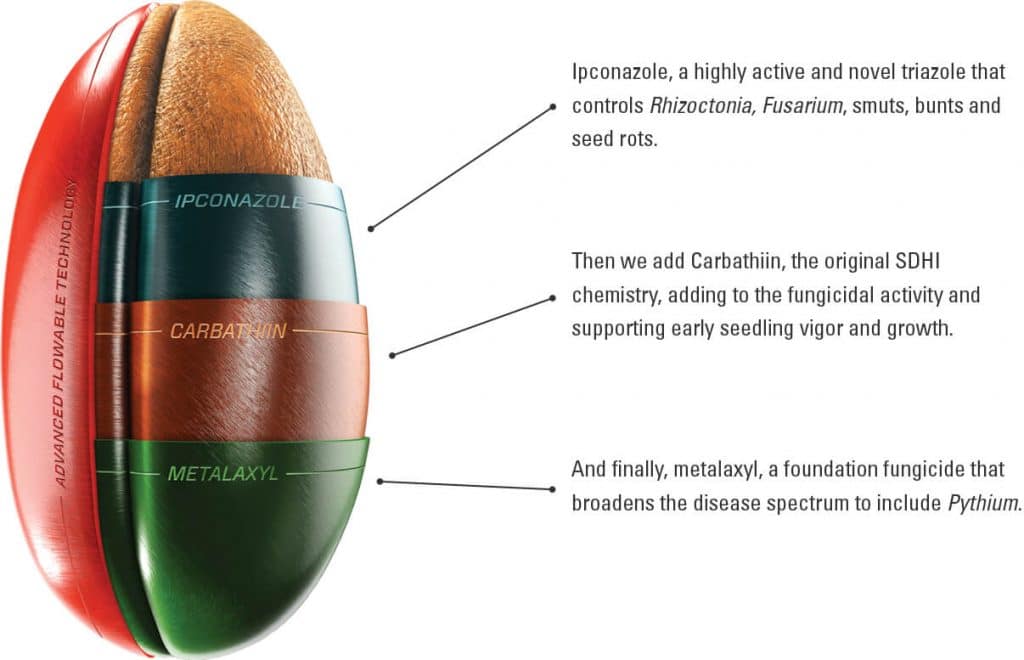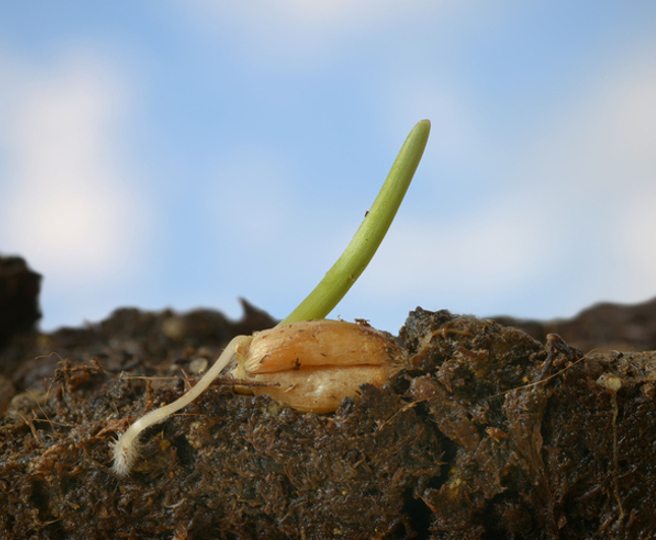Rancona¨ Trio from Arysta LifeScience adds a new dimension to seed protection by offering both contact and systemic activity.
Seed treatment information is seemingly everywhere, and for good reason — these products help protect the investment you make every time you seed.
However, the sheer number of products out there can often make it difficult for growers to tell which ones truly offer something unique over the others. Realizing this is a crucial part of Arysta LifeScience’s marketing strategy, which has them introducing a new seed treatment to Canadian growers.
“Retailers and growers want to know a product works,. And they also want to know what it does that others don’t,” says Kate Sanford Mitchell, Canadian marketing manager for Arysta LifeScience.
Enter the new Arysta LifeScience seed treatment Rancona¨ Trio. Based off the formulation of Rancona Pinnacle, Rancona Trio uses three effective fungicides that give both contact and systemic activity for maximum protection against a broad spectrum of seed and seedling diseases in cereals.
That combination of both contact and systemic activity is key, Sanford Mitchell notes. “Not every active can say that it offers both. That’s a big value to growers when they’re putting seed in the ground. With both contact and systemic activity, not only are you preventing disease from infecting the seed prior to germination, but you’re continuing to protect it when that plant starts growing. It’s important to have that added protection.”
All three of the fungicides in Rancona Trio offer benefits for wheat, barley, oat, triticale and rye, meaning the seed is protected for approximately the first 21 days of its life, explains Brian Schilling, Canadian development manager for Arysta LifeScience.

“As the seed sits in the soil and begins to germinate, that’s where contact activity comes into play. It protects the seed from seed and soil borne pathogens present on or around the seed after planting. Following germination and once the germinating seedling emerges from the soil, systemic activity means continued protection during crop establishment when the seedling is very vulnerable. The active ingredients in Rancona Trio will move through the developing seedling and continue to protect the seedling from pathogens as the crop grows and establishes,” Schilling says.
Rancona Trio builds upon the strength and success of Rancona Pinnacle by including both metalaxyl (a foundation fungicide that broadens the disease spectrum to include the control of Pythium) and ipconazole (a highly active and novel triazole that controls Fusarium, Rhizoctonia, smuts, bunts and seed rot), and adds carbathiin, the original SDHI chemistry that adds to fungicidal activity and supports early seedling growth and vigour. Growers get enhanced protection with Rancona Trio, Sanford Mitchell notes.
“We want the plant to have vigour and take in as many nutrients as it can during that 21-day stage. Anything you can do to help it get off to a good start is really important,” Sanford Mitchell says. “April and May can be harsh, so in developing Rancona Trio we thought, ‘What can we do to help the seed stay as healthy as possible for the first 21 days of its life?'”
Rancona Trio is new to the market, but growers are already familiarizing themselves with it and the concept behind it, Sanford Mitchell says. Brian Hergott, who farms canola, wheat and barley in Bruno, Saskatchewan, has experience with both Rancona Pinnacle and Rancona Trio. For him, the benefits of using Rancona seed treatments on wheat and barley have become more than apparent.
“There’s a difference in vigour and a healthier plant, definitely,” he says of the Rancona products. “Especially when you compare it to a plant from untreated seeds.”











